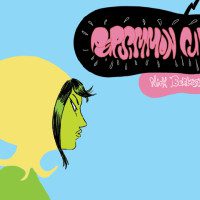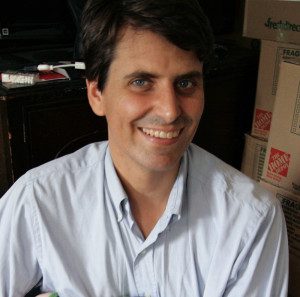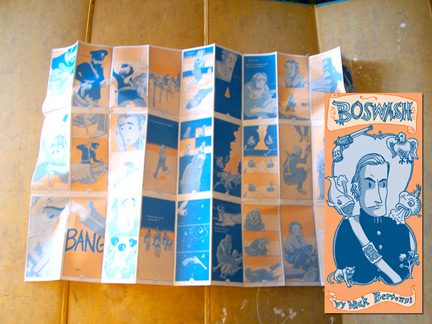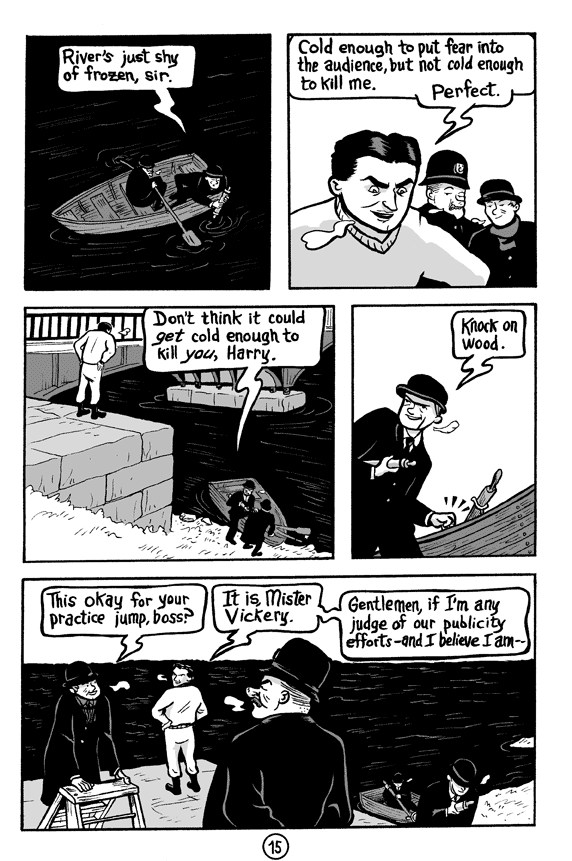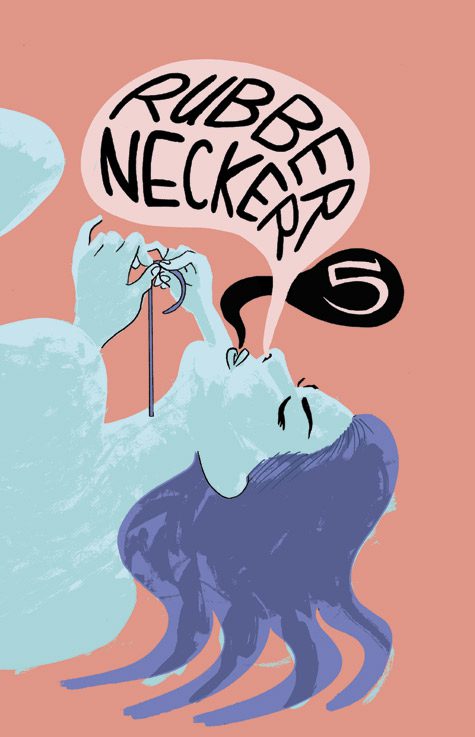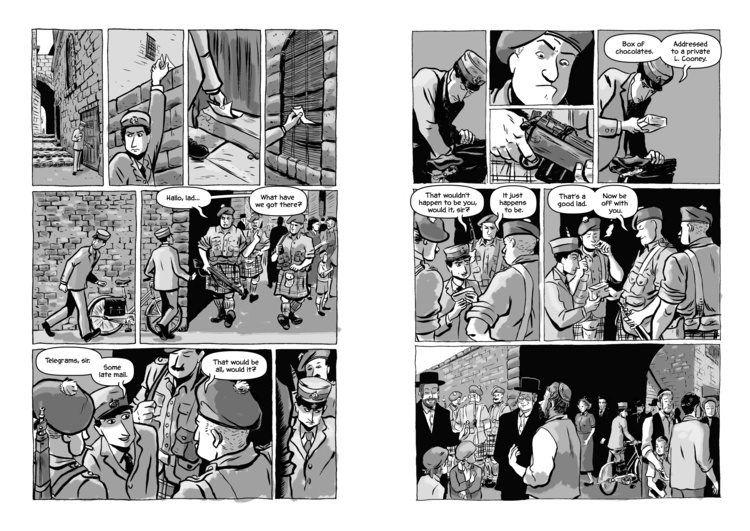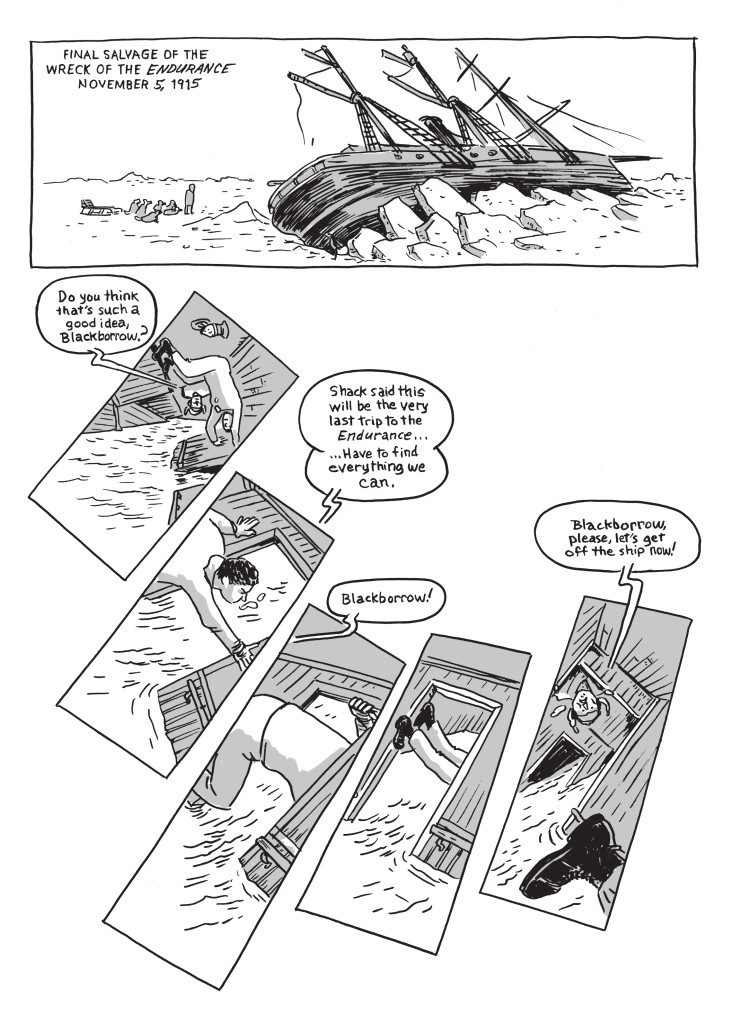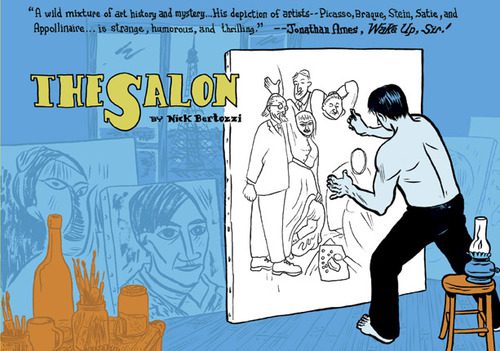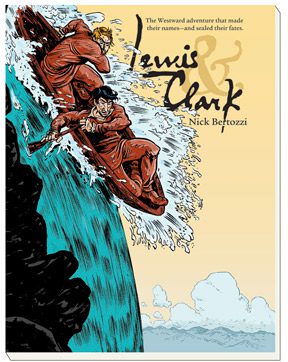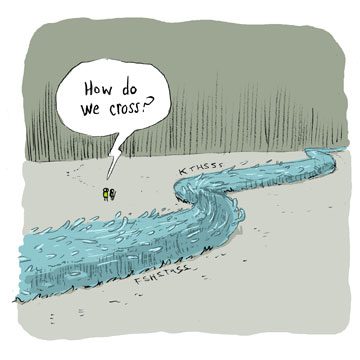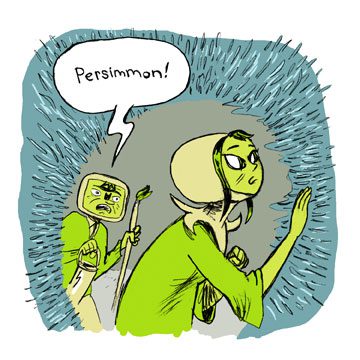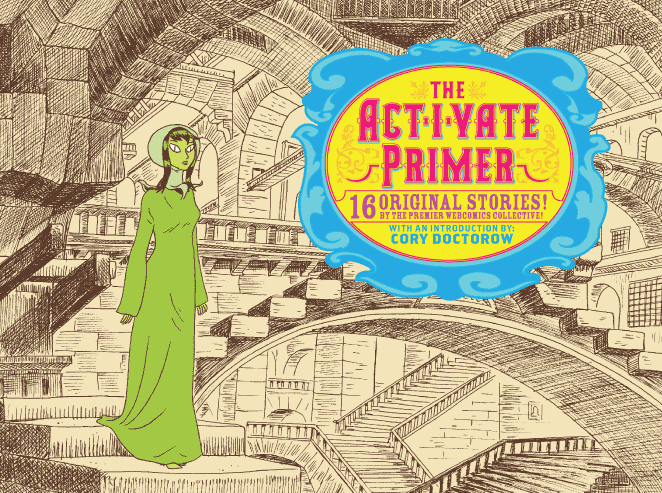The New York Comics & Picture-Story Symposium is a weekly forum for discussing the tradition and future of text/image work. Open to the public, it meets Tuesday nights from 7-9 p.m. EST in New York City. Presentations vary weekly and include everything from historical topics and technical demonstrations to creators presenting their work. Check out upcoming meetings here.
Recently, I got a chance to talk with cartoonist, illustrator, and educator Nick Bertozzi about his work. Bertozzi’s books include The Salon, Lewis & Clark, Persimmon Cup, and Shackleton: Antarctic Odyssey. Additionally, he’s collaborated on Houdini: The Handcuff King, Stuffed!, Diabetes and Me, and Jerusalem: A Family Portrait. His series Rubber Necker won a Harvey Award for best new talent and new series, and he’s also the recipient of an Ignatz and a Xeric Award. One of the founding members of ACT-I-VATE, Bertozzi teaches cartooning at the School of Visual Arts.
The Rumpus: How did you start making comics? Were they a serious focus for you right away, or over time?
Bertozzi: I made 80 mini-comics from age 8 to 15. But I never once thought about becoming a comics artist in later life. It was just something I did, a sickness that I could never shake. And now that I’m 20 years into a comics-making life I see how essential they’ve been to the way I see the world.
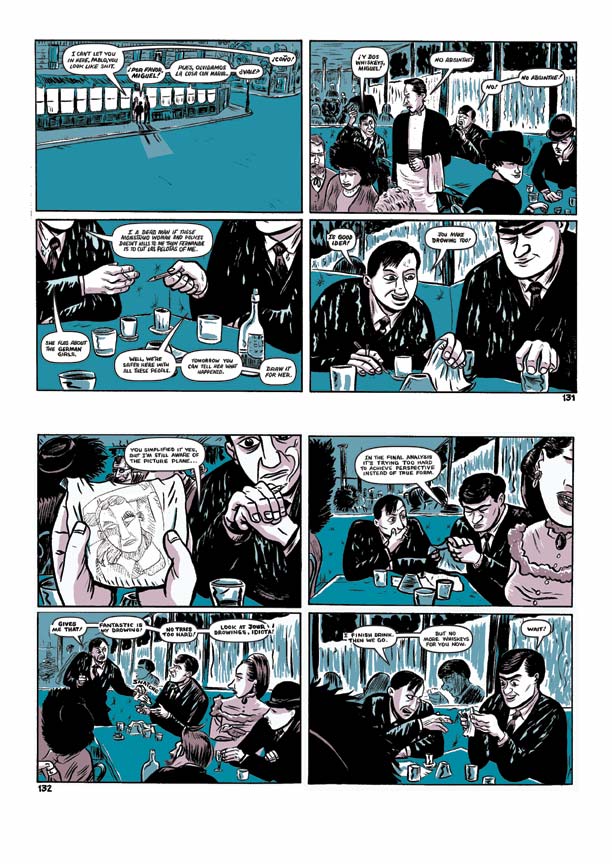 Rumpus: You’ve talked before about how important solid storytelling is in comics. You also have extensive experience in examining and teaching narrative technique. For your work and for your own enjoyment, do you seek out innovative approaches to storytelling in comics and other media? As you develop your own stories, what is your process and what are the things you focus on when building off of your initial ideas?
Rumpus: You’ve talked before about how important solid storytelling is in comics. You also have extensive experience in examining and teaching narrative technique. For your work and for your own enjoyment, do you seek out innovative approaches to storytelling in comics and other media? As you develop your own stories, what is your process and what are the things you focus on when building off of your initial ideas?
Bertozzi: I’ve subtly manipulated form in my comics; the panels in The Salon, my comic about the Modernists, were all drawn using the golden ratio. But I’m not an experimenter—I use the techniques that other cartoonists come up with and find a way to fit them into a story. I appreciate the experimental, but I’m more intrigued by a solid story structure and characters that make me forget I’m reading a comics. James Sturm’s America is still the only comic that I return to again and again.
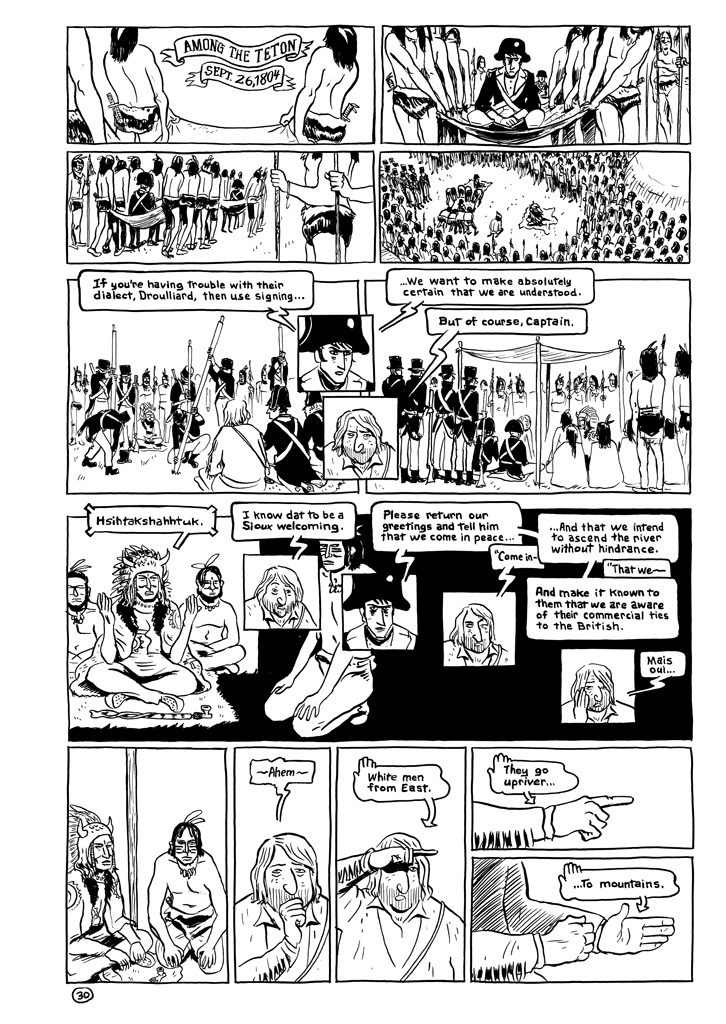 When I’m putting together a book about historical characters—Lewis & Clark, Sir Ernest Shackleton, Picasso—I read as much as I can about them, write a strong plot, and then fill in each scene with a beginning, middle, and end, considering the motivation of the protagonist and antagonist as I go. I will often give the characters something physical to do so that I’m not boring the reader with endless talking heads.
When I’m putting together a book about historical characters—Lewis & Clark, Sir Ernest Shackleton, Picasso—I read as much as I can about them, write a strong plot, and then fill in each scene with a beginning, middle, and end, considering the motivation of the protagonist and antagonist as I go. I will often give the characters something physical to do so that I’m not boring the reader with endless talking heads.
Rumpus: Boswash was a map-comic that’s read panel by panel as the reader unfolds it. Your different books explore different visual approaches. Is experimenting with format and style a big part of your process?
Bertozzi: I was glad to have made Boswash, but I find it tedious to read now. The format takes me out of the story. When I was 23 and embarking on full-time cartooning, I knew that it would take years before my hands would catch up with the images in my head. Knowing that, I gave myself an artistic challenge for each new project I took on. The Salon was my attempt to incorporate characters and background into a seamless visual package. Houdini: The Handcuff King was me trying to spot the areas of black with more confidence. I pushed myself to consider design on Stuffed!, and so on. I still set challenges like this for myself and it now seems I’m getting farther away from being the ideal of cartoonist.
Rumpus: Something I’ve noticed about your work is how well you depict ensembles. You flesh out groups of characters, staying true to their individual personalities and playing them off of each other. Often in comics, there’s a temptation for stories about groups to focus on one or two individuals and let everyone else have more generalized personalities, but you take the time to give all the major characters their moments, or at least hint that they have more going on that we’re not seeing. Is that important to you when developing a story? Are you especially interested in how groups function both when they collaborate and clash?
Bertozzi: What does the protagonist want? What stops the protagonist from getting what she wants? These questions, found in David Mamet’s On Directing Film, gave me the tool to easily create dramatic tension. It’s natural then to apply those questions to the antagonist and any other character in the scene, and the writer then avoids flat exposition-laden characters. I’m happy that you’ve noticed that I take this care. But maybe I was prompted to write this way because of an unhealthy youthful obsession with the Beatles and their distinct personalities.
Rumpus: Rubbernecker #5 was a great collection of stories, including the personal and meditative How and Why to Bale Hay. Are you making more of the series?
Bertozzi: That story was my first foray into autobiography and though I’m very pleased with the outcome, it was a pain in the ass to work out. The main difficulty was finding the correct voice of the narration. I wrote several drafts in which the narration was a bad imitation of Daniel Clowes’ distinct style of narration. His immense shadow is the reason I’ve avoided narration and internal monologue since I started making comics. I pulled it out in the end, but I’m still wary of writing that way.
Rumpus: Can you talk a bit about your and Boaz Yakin’s richly devatasting Jerusalem: A Family Portrait?
Bertozzi: This 380-page comic is about a Jewish family in Jerusalem during the birth of Israel from 1945-48. The book has its bleak moments of course, but Boaz’s script is filled with human moments and it drew me in, enticing me to spend nearly two years of my life on this book.
Rumpus: How did Shackleton come about? Which parts of his story were compelling to you?
Bertozzi: A friend told me the story of Shackleton over a decade ago and I knew, as I was listening, that I’d turn it into a comic. I don’t want to spill the beans other than to say things keep getting worse for Shackleton as he tries to save his 28 men from dying on an ice floe in the Antarctic.
Rumpus: You and Jim Averbeck have a middle-grade mystery, A Hitch at the Fairmont, coming out this spring, and Hitchcock is a character. What was it like working on this book? Are you a Hitchcock fan?
Bertozzi: I love Hitchcock and recommend the Hitchcock/Truffaut book to anyone who’s interested in story. I use his “Show, don’t tell” aphorism constantly in the classes that I teach.
Rumpus: What was it like making The Salon? Especially to work with those particular characters (you’d mentioned Picasso stood out right away).
Bertozzi: Picasso’s dialogue would pop onto the page fully formed. I never had to finesse or re-write it. He’s the person I wish to be: forward-moving, pushy, loyal, and funny. The other character that gave me pleasure to write was Gertrude Stein. I made up much of her personality for my book, but she also possesses qualities I’d like to have. I suppose the book was my deep-held fantasy life.
Rumpus: The Salon takes historical characters and plunges them into a vibrant and unusual murder-mystery with sci-fi elements. History has a strong presence in your work, as seen clearly in your books Lewis and Clark, Shackleton, and in Houdini: The Handcuff King, Jerusalem, and even in Stuffed. What is it about history that fascinates you? Are there particular periods, people, or types of stories that stand out for you?
Bertozzi: My first three graphic novels were set in 1907, 1907, and 1908, so yes, I do have a historical period, or year that I like to work in. History is too often written as names and dates and given the gloss of legend and that way of seeing the past is boring. I wanted to show Lewis & Clark fighting over the direction to take their canoes. I wanted to show Picasso in his moment of discovery.
Rumpus: Your book, Persimmon Cup, which originally appeared through Act-i-vate, is now coming out as a Kickstarted book. Can you talk a little bit about how the story (and its highly original world) evolved? Where do you want to take it from here?
Bertozzi: We used to live a couple blocks from the Avon Cinema in Providence, RI when I was a kid, and my dad took me there to see Aguirre, Wrath of God and Fantastic Planet (Planete Sauvage) and many other odd films. Persimmon Cup comes from that experience. When I began to create a science-fiction world, I wanted it to be more than costumes and vehicles; I wanted gravity to be different, food to work a different way, and social structures to work in an odd manner. The story, though, is a very straightforward bildungsroman so don’t be scared away.
Rumpus: This isn’t a real question, but regarding Persimmon Cup—have you ever heard of trypophobia?
Bertozzi: Holy shit, that’s horrifying!
***
Image Credits:
Image 1: Photo of Nick Bertozzi
Image 2: Nick Bertozzi, The Salon
Image 3: Nick Bertozzi, Lewis & Clark
Image 4: Nick Bertozzi, Boswash
Image 5: Nick Bertozzi and Jason Lutes, Houdini: The Handcuff King
Image 6: Nick Bertozzi, Rubbernecker #5
Image 7: Nick Bertozzi and Boaz Yakin, Jerusalem: A Family Portrait
Image 8: Nick Bertozzi, Shackleton: Antarctic Odyssey
Image 9: Nick Bertozzi, Shackleton: Antarctic Odyssey
Image 10: Nick Bertozzi, Shackleton: Antarctic Odyssey
Image 11: Nick Bertozzi, The Salon
Image 12: Nick Bertozzi, Lewis & Clark
Image 13: Nick Bertozzi, Persimmon Cup
Image 14: Nick Bertozzi, Persimmon Cup
Image 15: Nick Bertozzi, Persimmon Cup
***
Andrea Tsurumi is a NY-based illustrator and cartoonist who likes history, absurdity, and outer space, in no particular order. She was included in the 2013 Best American Comics notables list. You can see her work here and her latest projects here.
